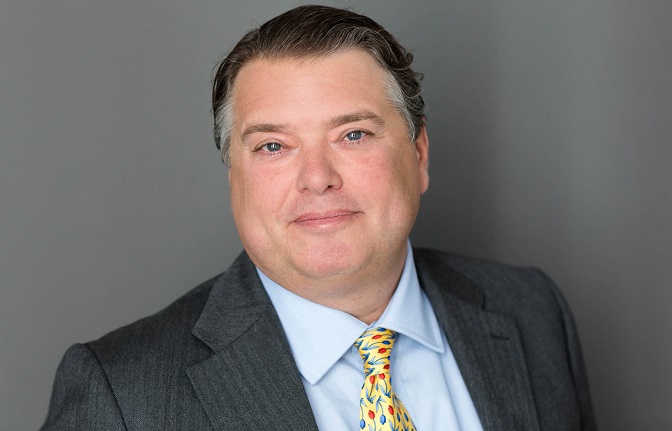For the past year, the Covid-19 pandemic has grounded the growth of Africa's developing economies, says Simon Rankin.
However, the easing of the pandemic, aided by the global vaccine rollout, means that the African markets are turning their attention towards post-pandemic recovery. Taking centre stage in this recovery is a focus on environmental, social, governance (ESG), which has been demanded by investors, assisted by continued government stimulus, and supported by Development Financial Institutions (DFIs) and multi-national development banks.
Impact on Africa's funding
Covid-19 has had both a very direct and negative impact on Africa's growth. OMFIF and Absa's Africa Financial Markets Index found that in 2020 there was minimal economic growth across the Continent, and that there had been a significant disruption in supply chain financing due to the pandemic.
This has had a severe impact on some of the most vulnerable economies such as Angola and Zambia, which lack the macroeconomic opportunities of countries such as South Africa and Egypt. With the recovery from the pandemic a key focus for Africa, new funding models are required to support those impacted and ensure Africa's smooth recovery is sustainable both financially and ecologically.
Development Financial Institutions have a large role to play
This is where DFIs come in. DFIs have long track records of being critical providers of financing in Africa, supplying riskier, longer term investment capital that tends to focus on sustainability, with ESG-like metrics that seek to ‘crowd in' commercial lenders.
While certain differences lie within the DFIs' specialities, with some focused on a sub-set of countries, sectors or currencies, most DFIs invest across the board to ensure, and enhance, a prospect's success.
As investment vehicles, DFIs can plug in the funding gaps on projects that banks might turn down due to concerns over the risk or length of an investment, as most banks tend to be more focused on shorter investment loans and less risky projects.
However, where the right opportunity exists, a co-lending or hybrid model can step in to action the opportunity. Banks can lend jointly with DFIs, with the banks holding most of the shorter tenor paper and the DFIs holding or guaranteeing the rest. This model has many applications and can be structured in a number of ways that can propel Africa's post-pandemic recovery forward in a sustainable way by turning a potential loan rejection into a successful application.
The rise of co-lending?
DFIs have traditionally worked two-fold. On one hand, their investments on the continent have been facilitated by banks - which is known as wholesale lending. DFIs lend money to an African or an international bank with on the ground connections, who then lend money to the agreed upon framework using embedded infrastructure. As these loans are funded by the DFI, they are traditionally sustainable in nature, adhere closely to the ESG requirements of the lender, and require reporting and validation.
DFIs have also utilised a direct lending structure, where the DFI bypasses banks and invests directly in companies on the ground in Africa. These tend to be larger transactions, where the DFI can afford to invest the time and resources necessary to ensure the project fits its model.
Therefore, the relationship between banks and DFIs in Africa lends itself to a hybrid-model of financing mid-sized companies, which the DFIs might not otherwise reach. Co-lending can be seen as filling the gap between wholesale programmes and direct lending, thereby increasing market penetration and optionality on a bespoke basis.
The combination of DFI capital, which can be used to make riskier investments, with a national or international bank's capital, reaches more businesses while alleviating some of the bank's reporting and validation obligations. At the end of the day, DFIs and banks have the same goals in Africa, which is to successfully finance Africa's future in a prolonged and sustainable method.
Like a green Ferrari
The pandemic has been a turning point for most of the world when it comes to ESG standards. What has traditionally been a niche market that investors weren't paying too much attention to, is now the backbone of the majority of investment strategies. DFIs are at the forefront of sustainable developments in emerging economies, and have always promoted an ESG style agenda, but what is changing is the on the ground willingness of projects in Africa to ensure they are adhering to ESG standards, define long ago as IFC protocols.
Investments that were not considered ‘bankable' a decade ago, such as renewable projects, are suddenly hot spots for funding due to the investment community's push for ESG investments.
For example, Lake Turkana, a wind power project in Kenya is like a green Ferrari providing an enormous quantity of renewable and sustainable energy to Kenya. The wind project has increased Kenya's national power generation capacity by 17% through providing clean, reliable, and low-cost power. A project that was DFI led, would now likely by jointly financed by commercial investors and DFI's.
This structure can also be utilised to support smaller enterprises. SMEs are essential to Africa's growth, and only through supporting the growth of entrepreneurs and SMEs that Africa can eliminate poverty and take itself to the next level. Hybrid lending structures that manage out the risk that banks don't want to take on, coupled with investing in ESG and sustainable development projects will pave the way for Africa's future.
By Simon Rankin, Principal at Absa CIB









